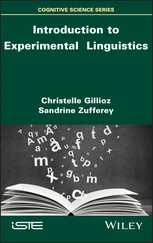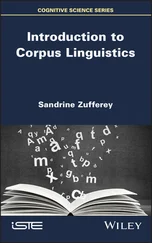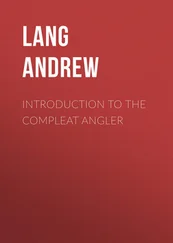But now reverting to (427), we can see that precisely the same link is signalled by use of the variable x in that representation. In other words, it turns out that if we suppose that wh-phrases move into spec-CP, we derive a syntactic representation which has characteristics that are similar to that required by the semantics –
effectively, we interpret a trace copy as a variable. It is important to be clear that this conclusion has been reached by relying on a generalisation of the empirical argumentation from section 21 (that wh-phrases move to spec-CP leaving behind a trace copy) and not by arbitrary stipulation.
This is progress, but where does it leave us with (420a, b, c), examples where the semantics again seems to require something like (427), but where there is nothing in the overt syntax to suggest anything beyond what a superficial syntactic analysis would produce? Or is there? We conclude this section by sketching just one of the many arguments for there being a syntactically motivated level of Logical Form for sentences including quantified noun phrases, a level at which the syntax provides the right sort of structures for the semantics to work as outlined above. It should be noted that when we offer syntactic arguments for this level of representation, we use initial capitals for Logical Form; this distinguishes it from the philosopher’s stipulated representations, often referred to as logical forms.
Consider the examples in (431):
(431) a.
Frank loves his hamster
b.
Who loves his hamster?
c.
Every boy loves his hamster
342
senten ces
The pronoun his can be interpreted in two distinct ways in each of these sentences. Take (431a): his can refer either to Frank or to some other male human being, say, George. In the former case, we say that Frank and his are co-referential.
For (431b), we again have an interpretation with his referring to, say, George, and in this case, the sentence means: ‘for which person x does x love George’s hamster?’
Additionally, however, his can have what is referred to as a bound variable
interpretation, in which case the sentence has the interpretation: ‘for which person x, does x love x’s hamster?’ Note that co-reference is an inappropriate notion in this case, as who (just like which sheep in 420d) does not refer to anyone.
Finally, (431c) is similar to (431b): his can refer to, say, George, or it can have a bound variable interpretation. In the former case, the sentence means ‘for every boy x, x loves George’s hamster’; in the latter, ‘for every boy x, x loves x’s hamster’.
Now, alongside the examples in (431), consider those in (432):
(432) a.
His hamster loves Frank
b.
Who does his hamster love?
c.
His hamster loves every boy
Two interpretations are available for (432a), just as for (431a): the sentence can mean that, say, George’s hamster loves Frank, or, with the co-referential interpretation, Frank’s hamster loves Frank. However, the bound variable interpretation of his is not an option in either (432b) or (432c). That is to say, (432b) cannot be interpreted as meaning ‘for which person x, does x’s hamster love x’ and (432c) cannot be interpreted as meaning ‘for every boy x, x’s hamster loves x’ (of course, if his were to be interpreted as referring to, say, George in (432b, c) the sentences are fine). The challenge, then, is to account for these observations: why can we not have the bound variable interpretation of his in (432b, c)?
We start by applying our assumptions about movement to (432b). After who has moved to spec-CP and does has moved to C, we have the structure
in (433):
(433)
CP
C'
TP
T'
VP
D C DP
T
V
D
whoi
does
his hamster
t
love
t i
Sentence meanings and Logical Form
343
In (433), the moved auxiliary does and its trace are italicised, whereas the moved wh-operator who and its trace are bold-face. Additionally, we have
co-indexed who and its trace in accordance with the convention introduced
above.
Now, we know that (433) does not allow the bound variable interpretation for his. Why might this be? Note that in this derivation the movement of who has crossed over the position occupied by his, the pronoun with which it must be interpretively connected for the bound variable interpretation. In this respect, (433) contrasts with (434), which indicates how (431b) is derived: (434)
CP
C'
TP
T'
VP
D
D C
T
V
DP
who i
ϕ
t i
ϕ
loves his
hamster
In (434), who does not cross his in moving to spec-CP, and the bound variable interpretation of the pronoun (his) is possible.
On the basis of these observations, we can formulate the Crossover Principle in (435) as a descriptive generalisation:
(435)
If an operator expression moves across a pronoun, the bound variable inter-
pretation of that pronoun is not possible.
This principle now accounts for the unavailability of the bound variable interpretation in (432b), and the availability of this interpretation in (431b). Furthermore, it is consistent with the fact that co-reference is possible in both (431a) and (432a), since these structures do not involve operator movement.
At this point, (432c) falls outside the Crossover Principle, yet it appears to exhibit the same sort of phenomenon as (432b) – the impossibility of a pronoun being interpreted as a bound variable. We can accommodate it to (435), however, if we suppose that there is, at some level of representation, covert (i.e. invisible) movement of the quantified DP every boy to some clause-initial position. For concreteness, suppose that this DP is moved to become an adjunct to TP (in much the same way as we earlier saw that a PP such as with a telescope can be adjoined to a VP). After this covert movement of every boy in (432c), we obtain the structure in (436) (the null complementiser serving to mark the declarative force of the sentence):
344
senten ces
(436)
CP
TP
TP
T'
VP
C
DP
DP
T
V
DP
ϕ
every boy
his hamster
ϕ
loves
t
The derivation in (436) requires reference to the Crossover Principle in (435) as the postulated movement takes an operator expression (every boy) across a pronoun (his). As a consequence, this pronoun cannot be interpreted as a bound variable.
Thus, so long as we see (435) as applying to all movements, overt and non-overt, we extend its coverage and we ensure that the identical interpretive restrictions in (432b, c) (no possibility of a bound variable interpretation of the pronoun) are accounted for in the same way. From the point of view of standard scientific practice, this is a positive result. Furthermore, there is a bonus which is particularly important in the current context. The representation in (436), with the quantified DP
moved out of its argument position and a co-indexed trace in this argument position, has the right sort of form for understanding the truth conditions of sentences which contain quantified DPs; and, rather than being stipulated, as it was by Frege, the representation is justified by independent syntactic argumentation.
To be entirely clear about what is being suggested here, consider (437), a sentence which contains the quantified DP many sheep in complement position: (437)
Sharkey sheared many sheep
Semantic considerations require that this sentence should have a logical form (note the lower case) along the lines of (438):
Читать дальше
![Andrew Radford Linguistics An Introduction [Second Edition] обложка книги](/books/397851/andrew-radford-linguistics-an-introduction-second-cover.webp)











